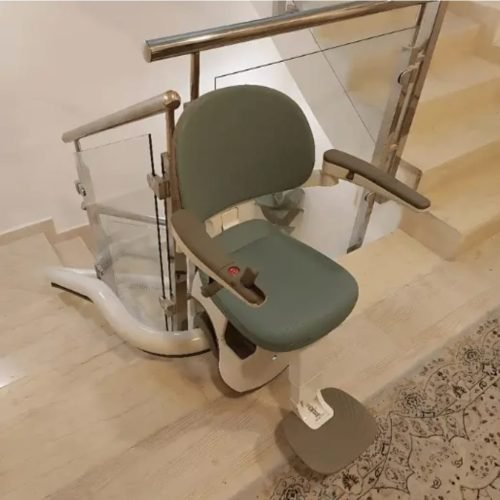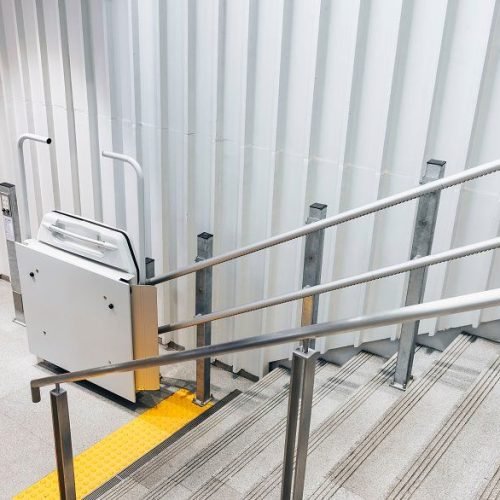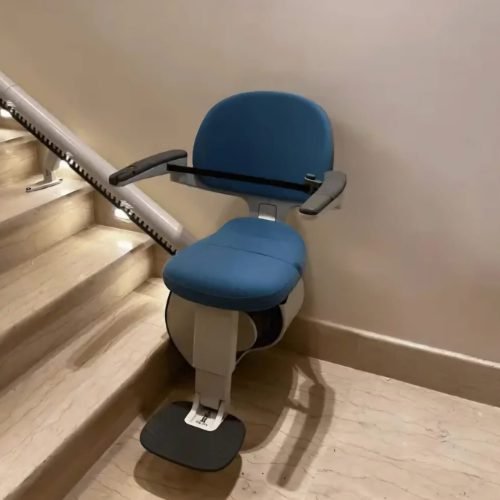Chair Elevator





ProjectDetails
- RSasmito Studio
- Sidoarjo, East Java, ID
- March, 2019
- -Straight Stair Lifts: 2 , 000 – 2,000–5,000.
- -Curved Stair Lifts: 10 , 000 – 10,000-15,000 or more.
DownloadBrochure
General Information
Chair elevators, also known as stair lifts or stair chairs, are mobility devices designed to help individuals with limited mobility navigate stairs safely and comfortably. They are commonly used in homes, public buildings, and healthcare facilities. Below is a comprehensive overview of chair elevators, including their types, features, benefits, installation, and more.
Chair elevators come in various designs to suit different stair configurations and user needs:
a. Straight Stair Lifts
Designed for straight staircases without curves or landings.
Most common and cost-effective type.
b. Curved Stair Lifts
Custom-built for staircases with curves, landings, or intermediate floors.
More expensive due to customization.
c. Outdoor Stair Lifts
Built to withstand weather conditions (rain, snow, UV exposure).
Often made with waterproof and rust-resistant materials.
d. Perch Stair Lifts
Designed for users who have difficulty bending their knees or sitting.
The user stands or perches on a small platform.
e. Heavy-Duty Stair Lifts
Built to accommodate higher weight capacities (up to 400 lbs or more).
Ideal for bariatric users.
f. Dual-Rail Stair Lifts
Allows two stair lifts to operate on the same staircase simultaneously.
Useful for multi-user households.
Modern chair elevators come with a variety of features to enhance safety, comfort, and usability:
a. Safety Features
Seatbelts: Secure the user during operation.
Swivel Seats: Allow the user to safely get on and off the chair.
Obstruction Sensors: Automatically stop the chair if an obstacle is detected.
Battery Backup: Ensures operation during power outages.
b. Comfort Features
Padded Seats: Provide comfort during use.
Adjustable Armrests and Footrests: Accommodate users of different sizes.
Smooth Start/Stop: Prevents jerky movements.
c. Control Options
Handheld Remote: Allows the user to call the chair from another floor.
Joystick or Button Controls: Easy-to-use controls for operation.
d. Customization
Foldable Components: Save space when the chair is not in use.
Custom Upholstery: Matches home decor.
- Improved Mobility: Enables individuals with mobility challenges to access multiple floors.
Safety: Reduces the risk of falls on stairs.
Independence: Allows users to move freely without assistance.
Cost-Effective: More affordable than installing a home elevator.
Easy Installation: Minimal structural changes required.
Installing a chair elevator typically involves the following steps:
a. Assessment
A professional evaluates the staircase to determine the best type of stair lift.
Measurements are taken to ensure a proper fit.
b. Customization (if needed)
For curved staircases, the rail is custom-built to match the stairs.
c. Installation
The rail is securely attached to the stairs.
The chair and motor are installed and tested for safety.
d. User Training
The user is trained on how to operate the chair safely.
The cost of a chair elevator depends on several factors:
Type: Straight stair lifts are cheaper than curved ones.
Features: Additional features like swivel seats or battery backup increase the cost.
Brand: Prices vary by manufacturer.
Installation: Custom installations may incur additional charges.
Regular maintenance ensures the longevity and safety of chair elevators:
Lubrication: Keep the rail and moving parts lubricated.
Battery Care: Replace batteries as needed.
Cleaning: Wipe down the chair and rail regularly.
Professional Inspections: Schedule annual inspections by a certified technician.
Some of the top manufacturers of chair elevators include:
Bruno Independent Living Aids
Acorn Stairlifts
Harmar
Stannah Stairlifts
Handicare
- Staircase Layout: Determine if you need a straight or curved model.
Weight Capacity: Ensure the chair can support the user’s weight.
Space Constraints: Check if the chair can fold to save space.
User Needs: Consider features like swivel seats or perch options.
Warranty: Look for a manufacturer that offers a comprehensive warranty.
If a chair elevator is not suitable, consider these alternatives:
Home Elevators: For multi-story homes.
Platform Lifts: For wheelchair users.
Wheelchair Ramps: For single-step or small elevation changes.
Conclusion
Chair elevators are an excellent solution for individuals with mobility challenges, providing a safe and convenient way to navigate stairs. With various types, features, and customization options, they can be tailored to meet specific needs and preferences. Proper installation, maintenance, and user training are essential for ensuring safety and longevity.
If you need further details or assistance with selecting a chair elevator, feel free to ask!
